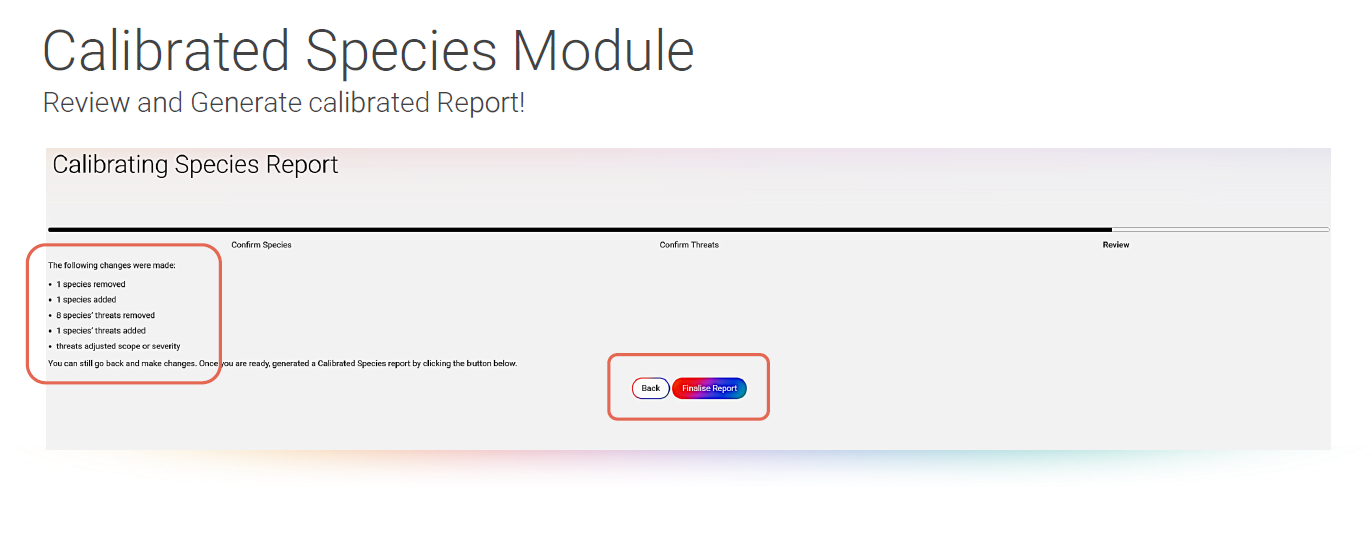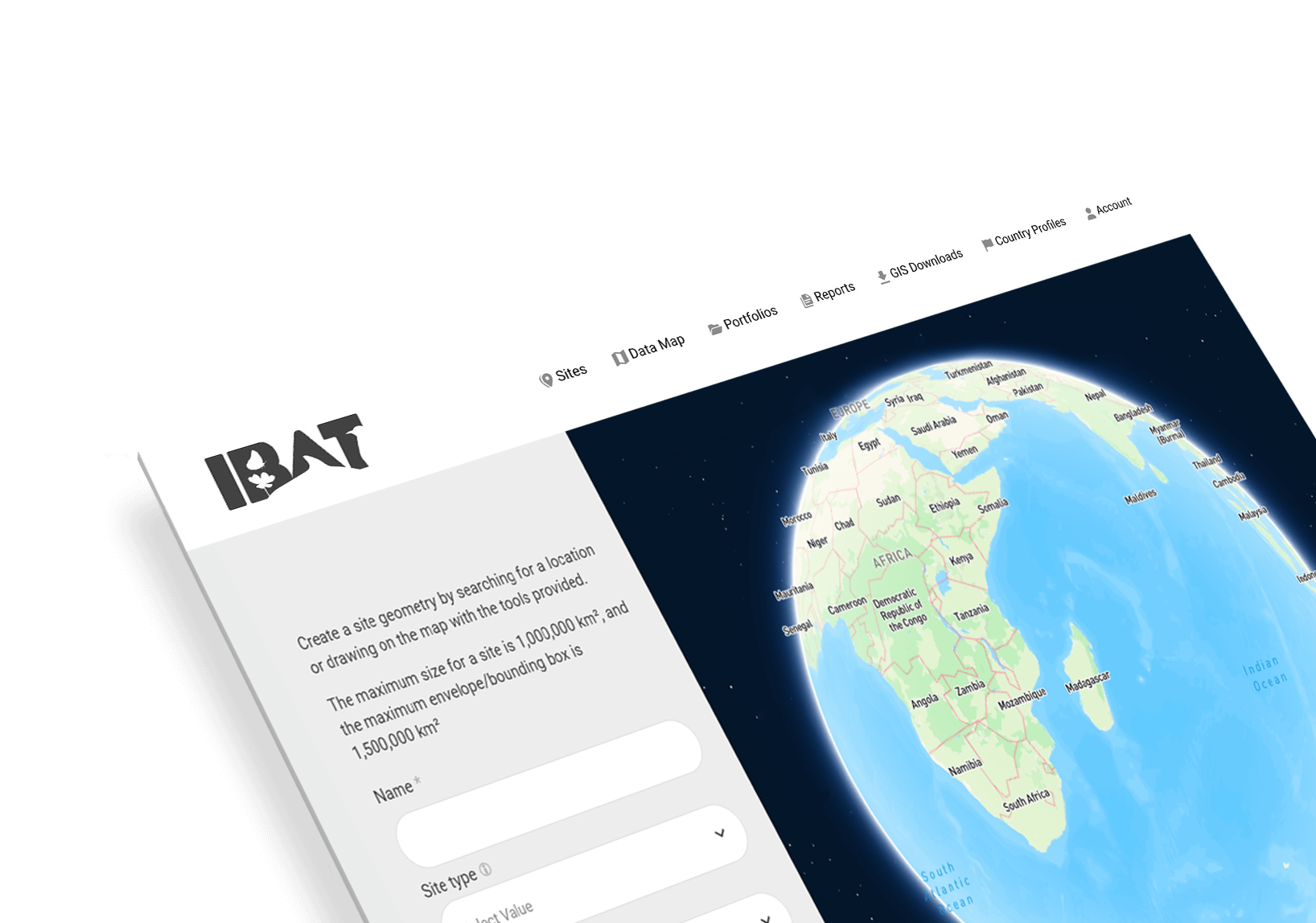IBAT has released a new Species report designed to enhance biodiversity reporting and conservation planning. The new report represents a major step forward in providing users with sharper data, broader species coverage, and deeper analytical insights, all aligned with the targets and goals of Kunming-Montreal Global Biodiversity
The launch marks the first step of two major updates, beginning with the Estimated Species Report, which offer sharper data, expanded species coverage, and deeper analytical insights. Later, in November, IBAT will introduce the Calibration Module, allowing users to integrate local data for greater precision and improved reporting. Together, these updates provide a complete pathway for organisations to assess, prioritise, and most importantly, act on reducing species extinction risk.
.png)
From analysis to action
The Species report takes the biodiversity assessment process further. It helps businesses and organisations identify not only which species are most at risk, but also what concrete actions can reduce extinction threats.
Warwick Mostert, IBAT Biodiversity and Business Lead explains:
“The enhancements in the Species report will now offer an opportunity to bring in local and site-based knowledge to identify and prioritise actions like restoring habitat or managing invasive species to reduce threats.”
Key functionality and features
The new Estimated Species report introduces several major enhancements designed to provide more accurate and actionable biodiversity insights, including:
• Higher Data Resolution increased by 25 times to 1km-by-1km squares for extra granularity.
• Reptile Species have been added to mammals, amphibians, and birds already in the report, enhancing insights.
• Updated START (Threat Abatement) layer based on the Red List data (2025 v1)
• Species Disaggregation helps you visualise how much each individual species contributes to the estimated STAR score of the area.
• Tabular Data Upgrade includes the contributions of each species and threat, as well as each species-threat combination down to level 3 threat data where available.
• Red List Assessment information is included, providing additional context for your nature-based decision-making, including assessment and threat information, and conservation actions.
Site-level precision
One of the report’s most valuable features is its ability to pinpoint locations where conservation actions can deliver the greatest return on investment for nature. The enhanced analysis identifies sites that support exceptionally high proportions of globally important species, helping organisations understand where their operations or investments intersect with critical biodiversity values.
By overlaying data on key threats such as habitat loss, hunting, or trade, IBAT’s Species report enables businesses and sustainability teams to identify priority areas for risk mitigation, restoration, or positive impact, ensuring that resources are directed where they can make the most measurable difference.
A richer picture of risks and opportunities
The new report also combines advanced threat data with Red List information to provide a clearer view of biodiversity pressures and potential responses. Through a species-by-threats matrix, users can quickly see which pressures are most relevant at their sites and explore targeted actions to address them.
For existing IBAT users
The original STAR report has now been retired to make way for the new Estimated Species Report. Access to the previous version (STARR) can still be provided upon request. Depending on your subscription level, the number of reports available varies:
• Enterprise Plus subscribers: unlimited Estimated Species reports
• Enterprise subscribers: 20 Estimated Species reports
• Pro subscribers: 5 Estimated Species reports
• Via PAYG: Estimated Species report for $1500
Each Estimated Species report can be refined using the Species Calibration Module to create a new Calibrated Species report. Each Estimated Species report comes with an unlimited number of Calibration opportunities. You will be able to calibrate all Estimated Species reports an unlimited number of times when the Calibrated Module is launched in November.
Looking ahead
The new Species report and Calibrated Module were showcased at the recent IUCN World Conservation Congress in Abu Dhabi, where they received strong interest and feedback from the conservation community. IBAT will continue to refine and expand the platform to make biodiversity data even more accessible and actionable.
By guiding users from data to decisions, and from decisions to measurable impact, IBAT’s Species report is poised to become an essential resource for all stakeholders including governments, businesses, and organisations committed to halting biodiversity loss.

Join us in November!
To explore the new Species report in more detail and learn how it can support your biodiversity commitments, join our upcoming webinar in November. The session will provide a live walkthrough of the tool, highlight case studies, and offer practical guidance on how to integrate it into your sustainability strategy.
Stay tuned for registration details and don’t miss this opportunity to engage with experts shaping the future of biodiversity action. For any questions, get in touch at ibat@ibat-alliance.org



